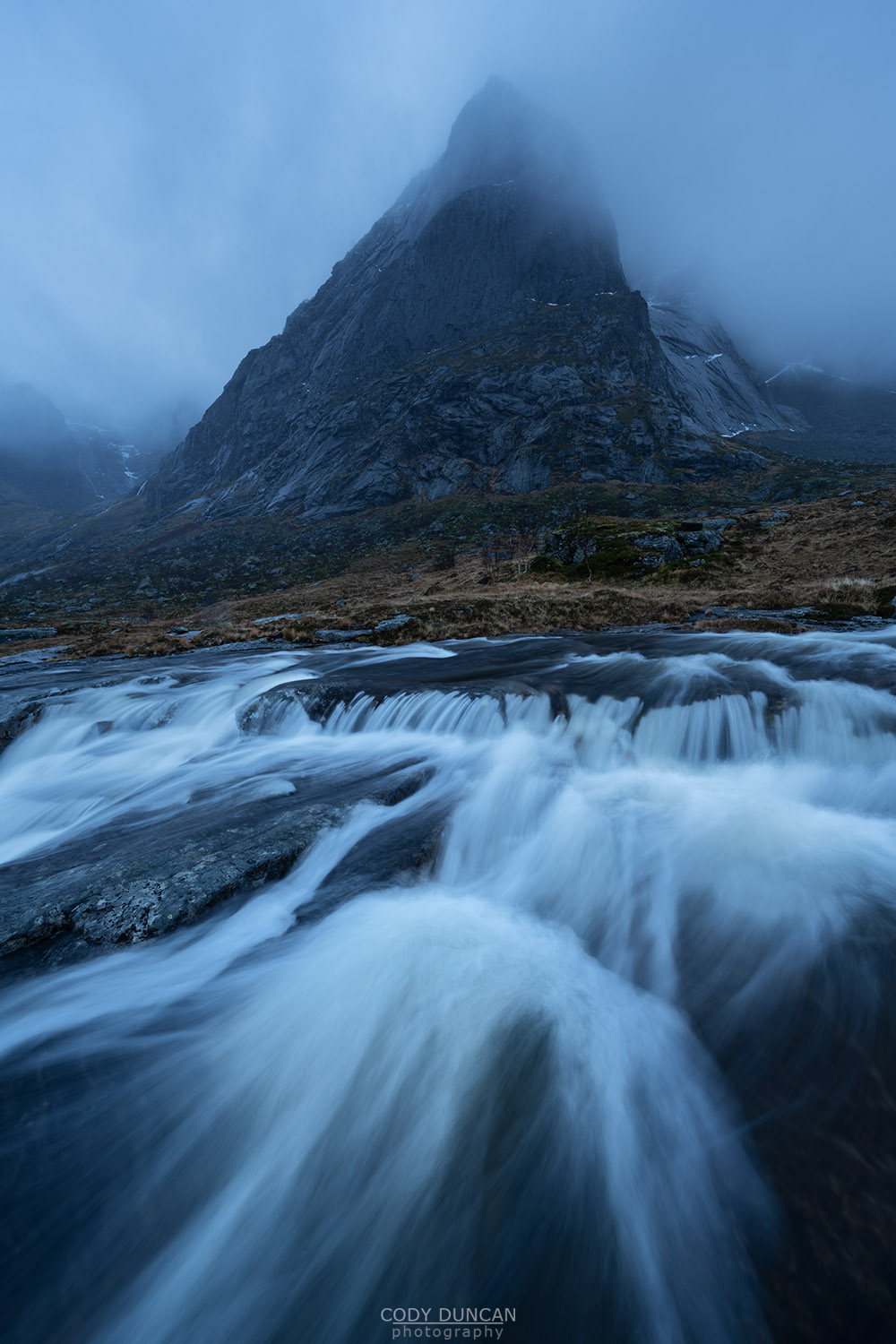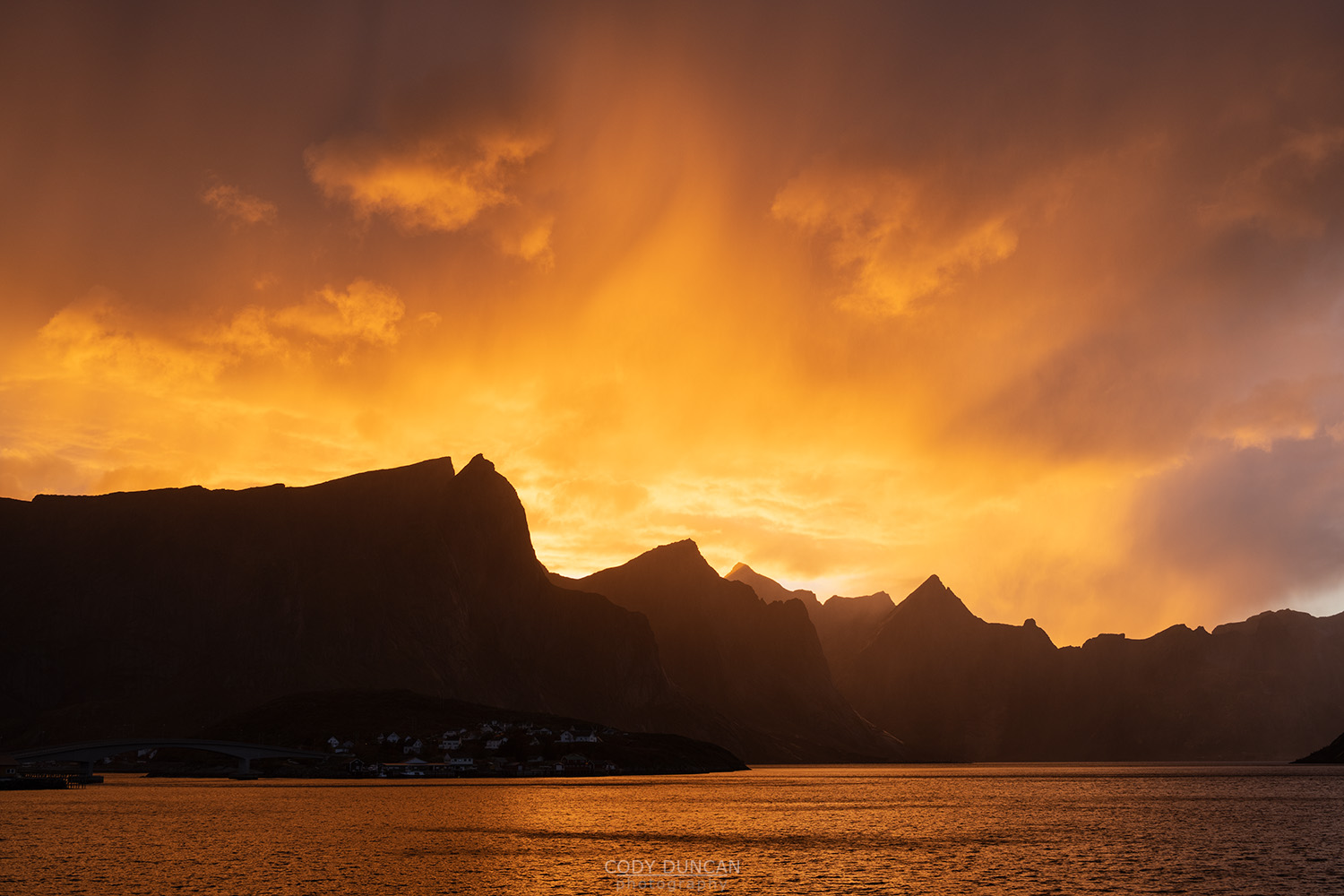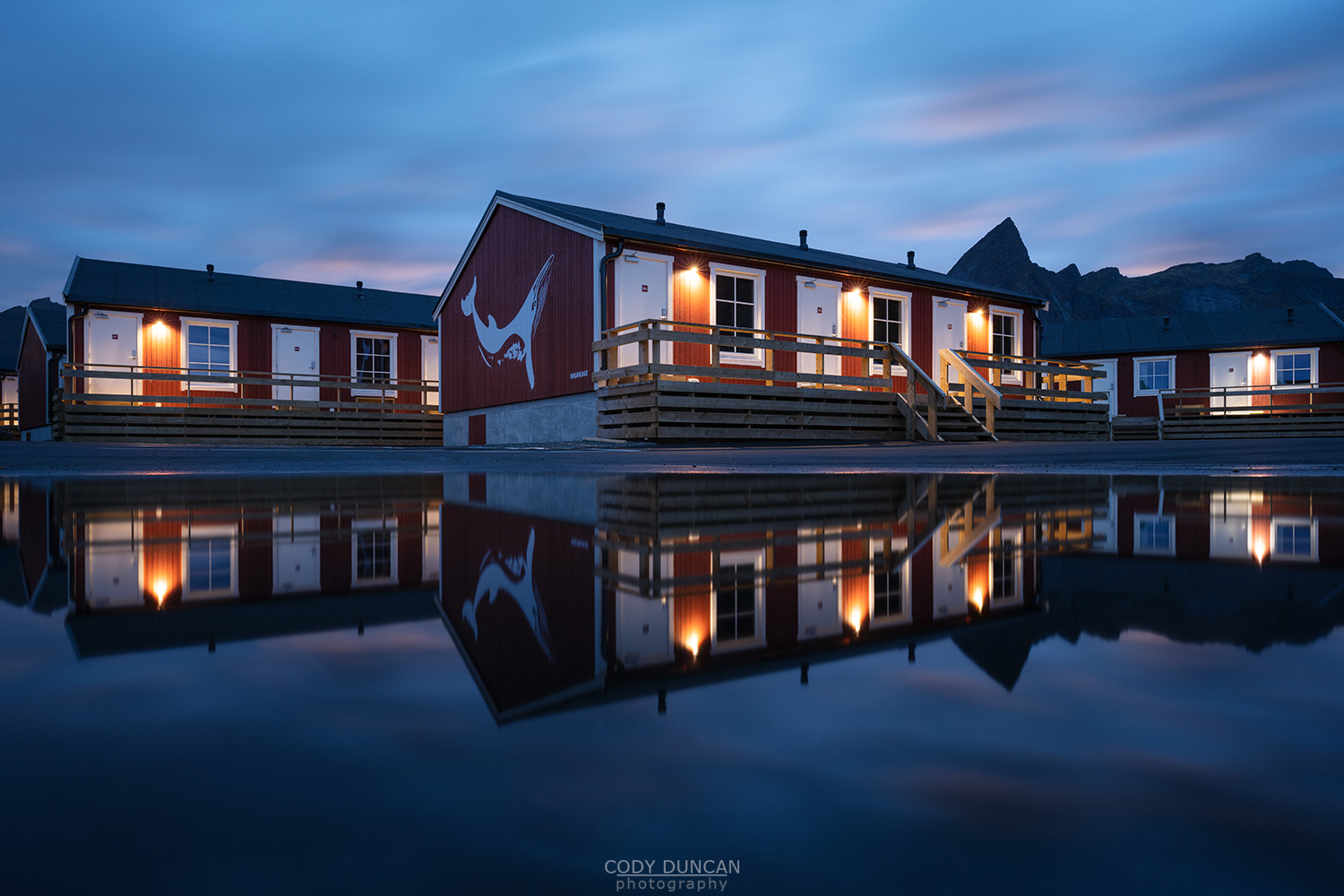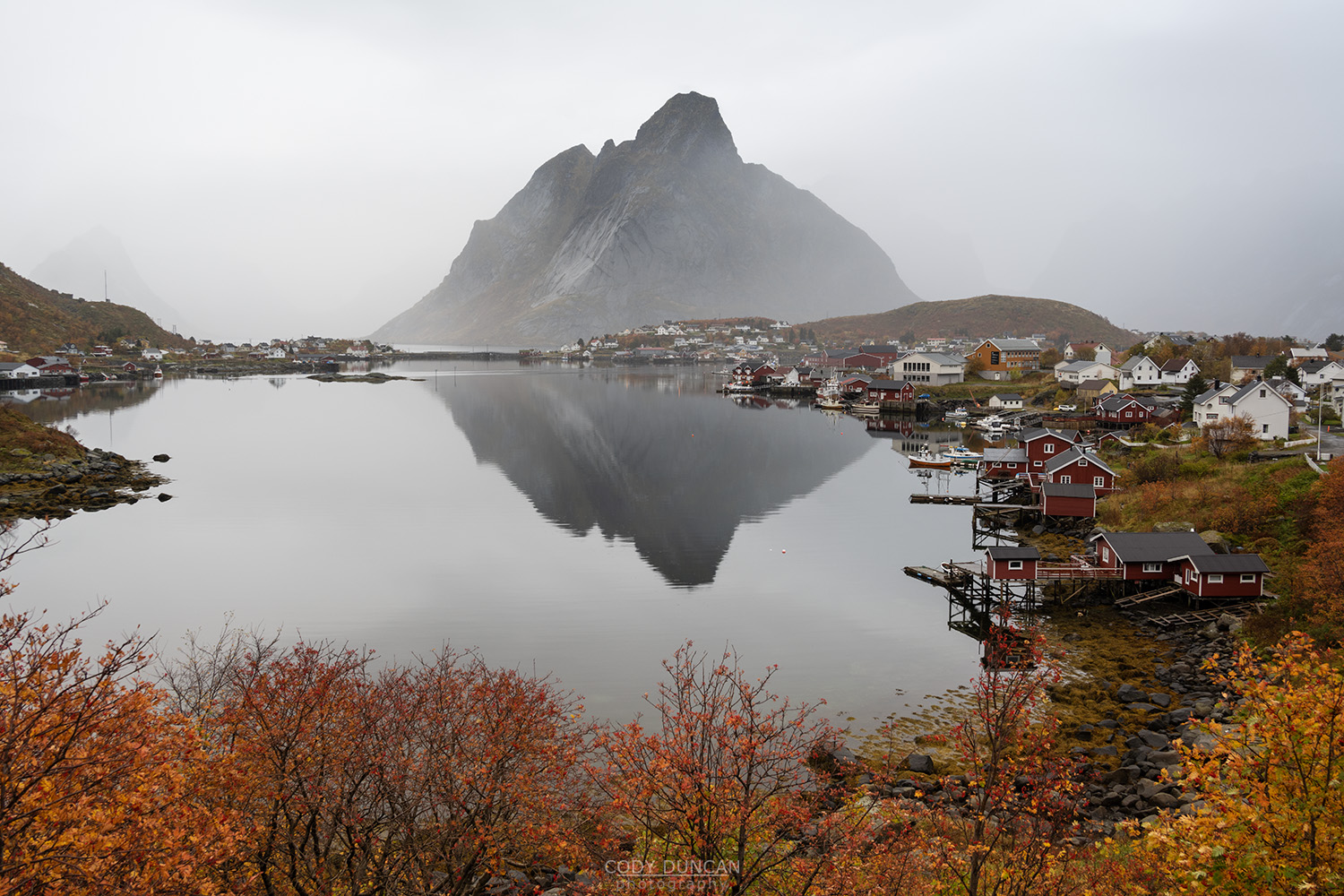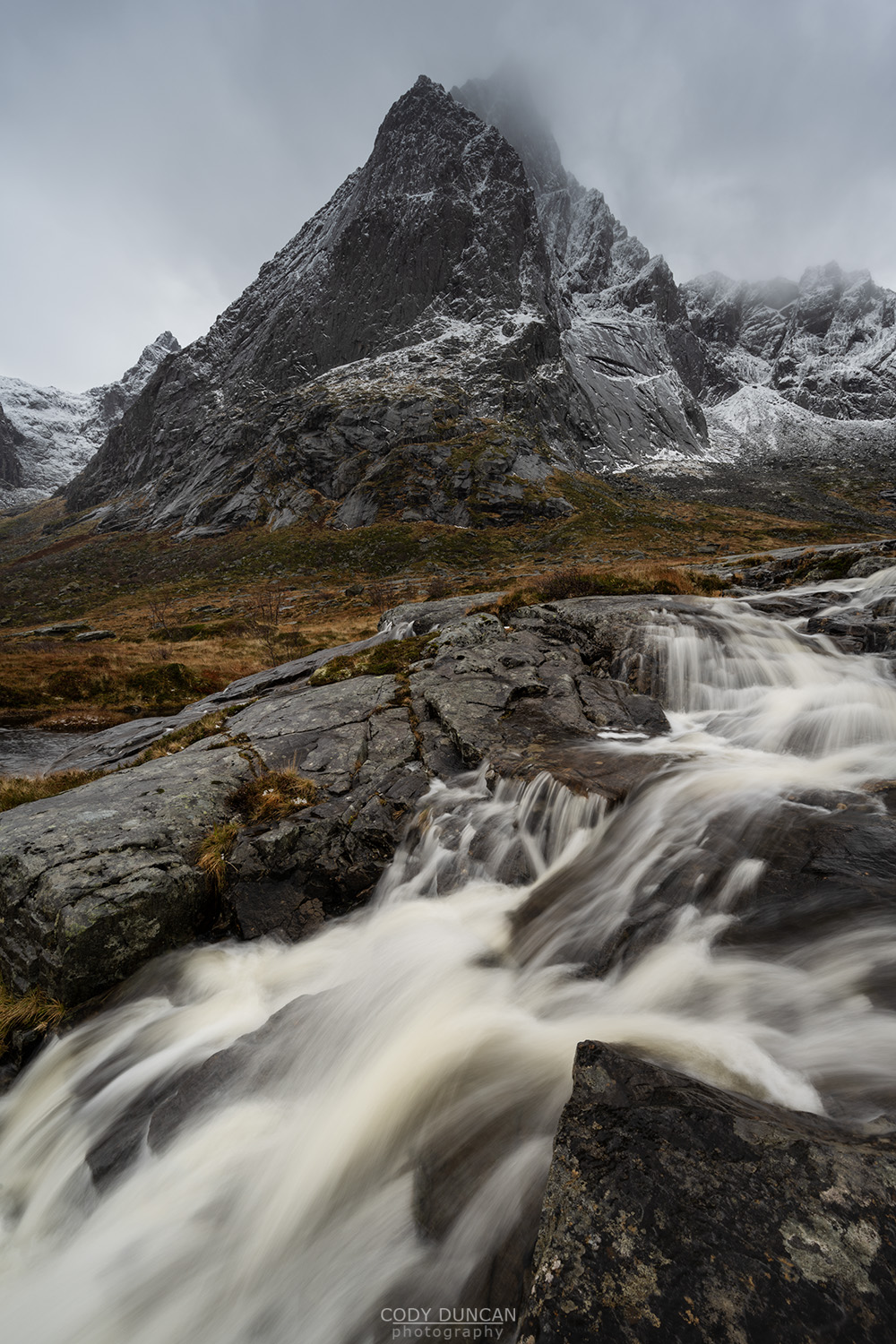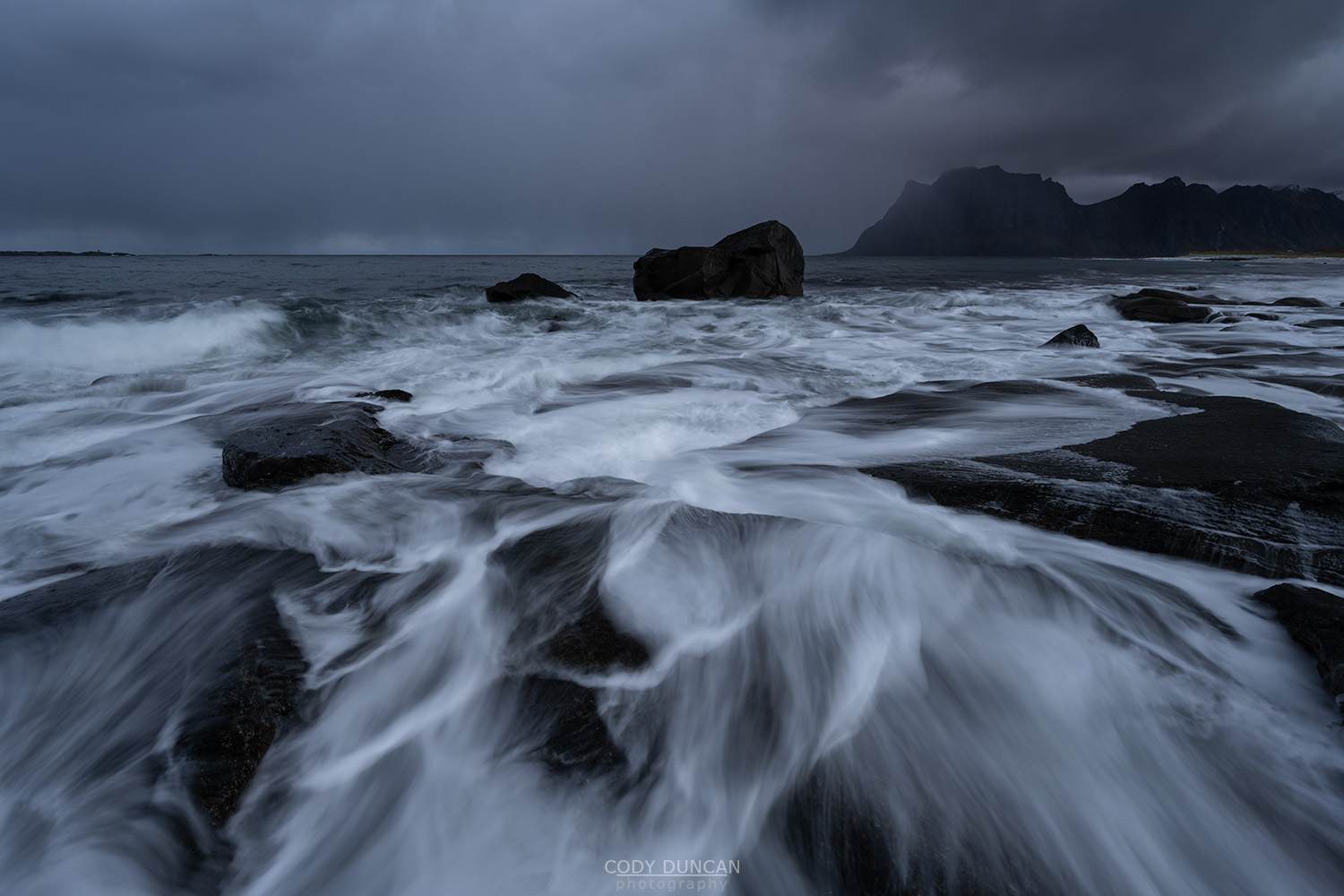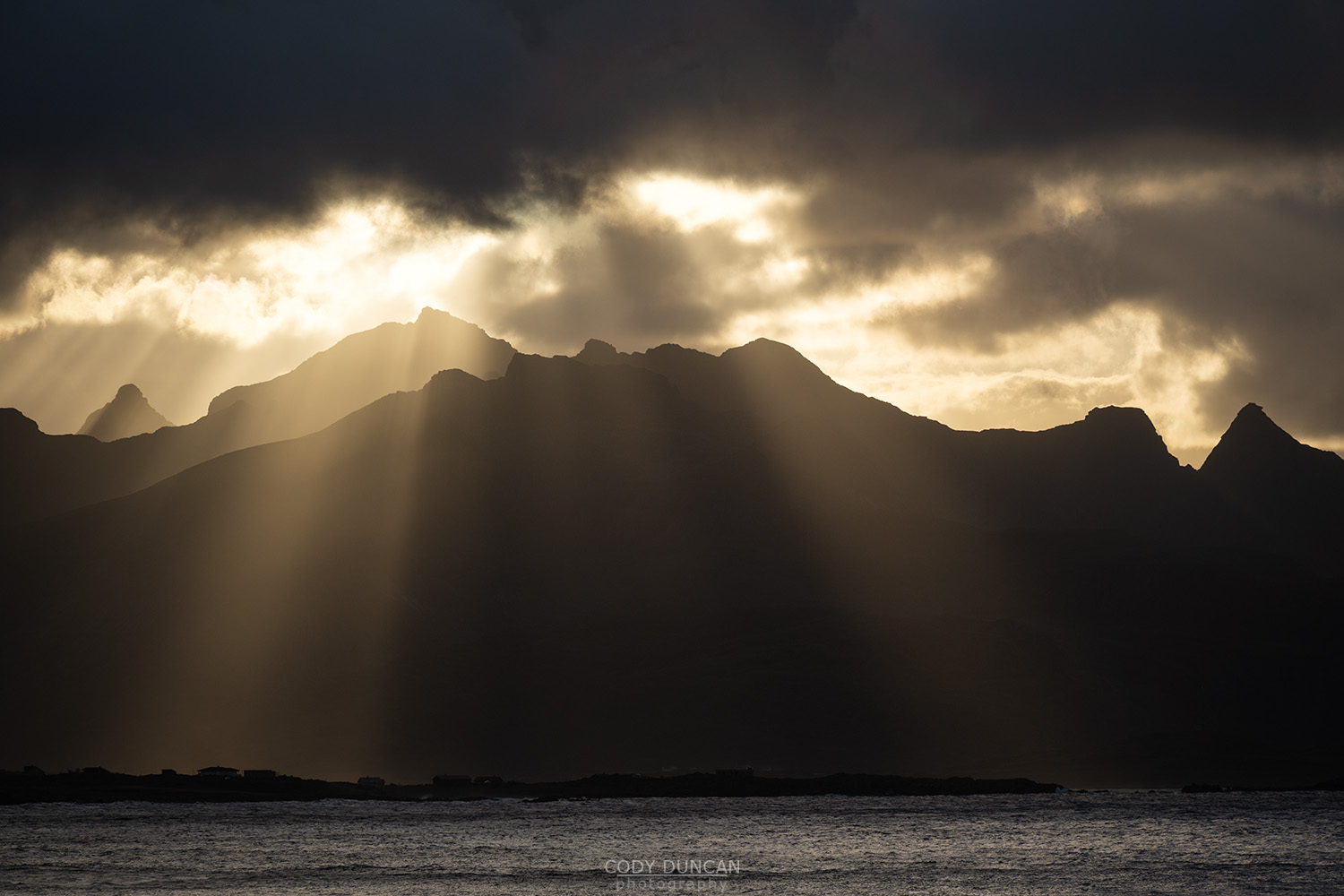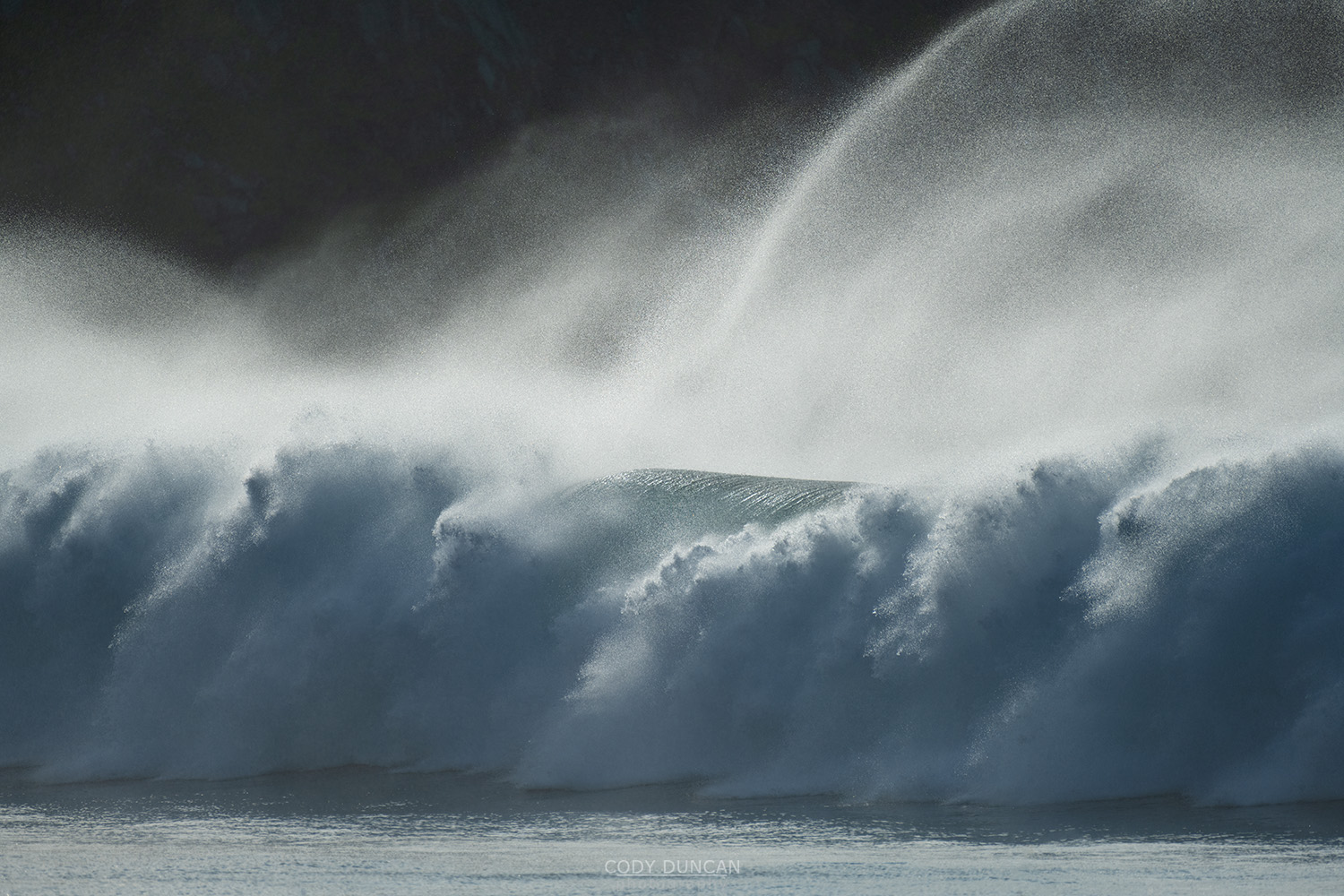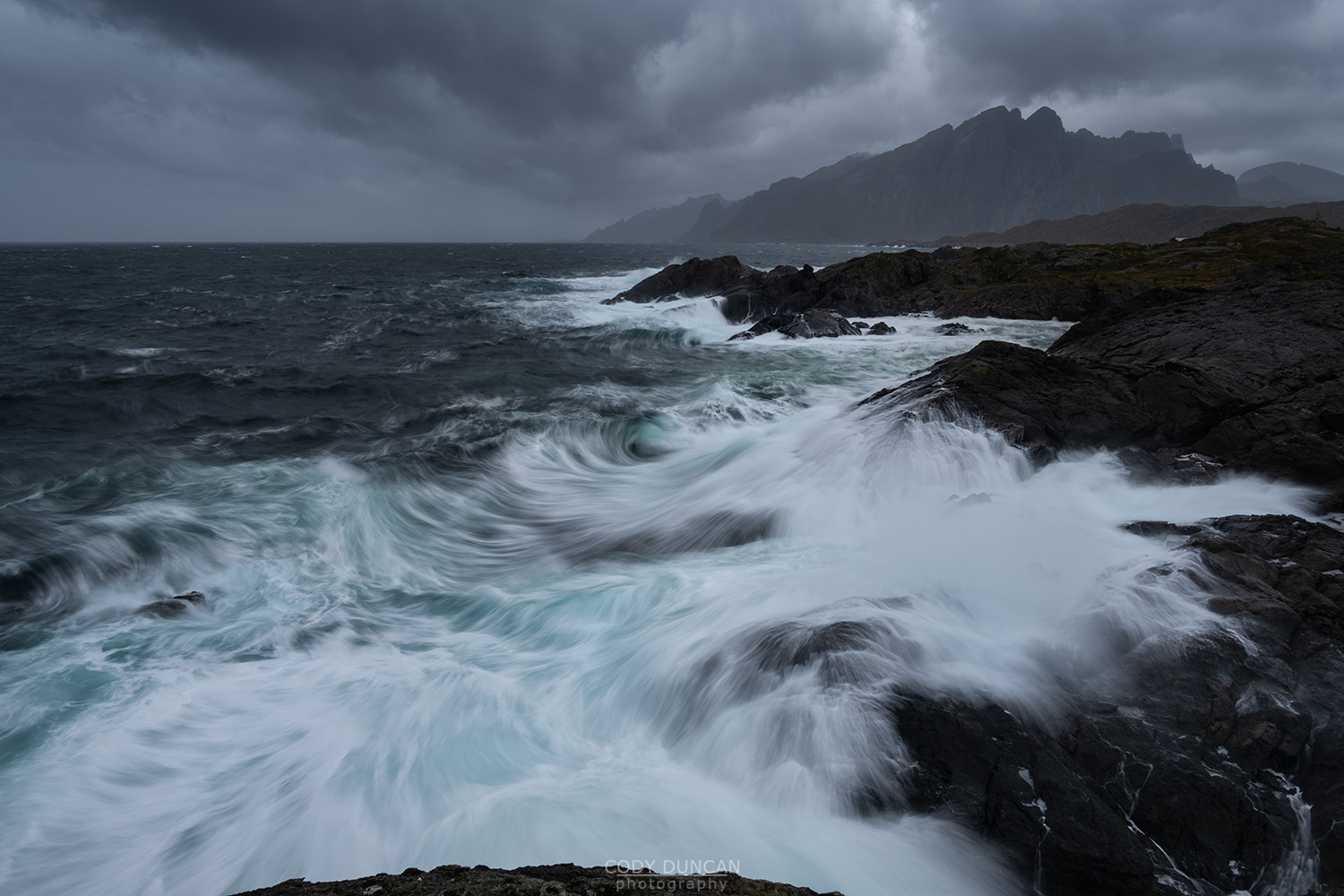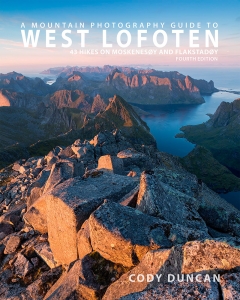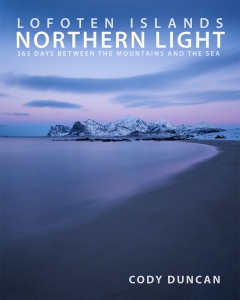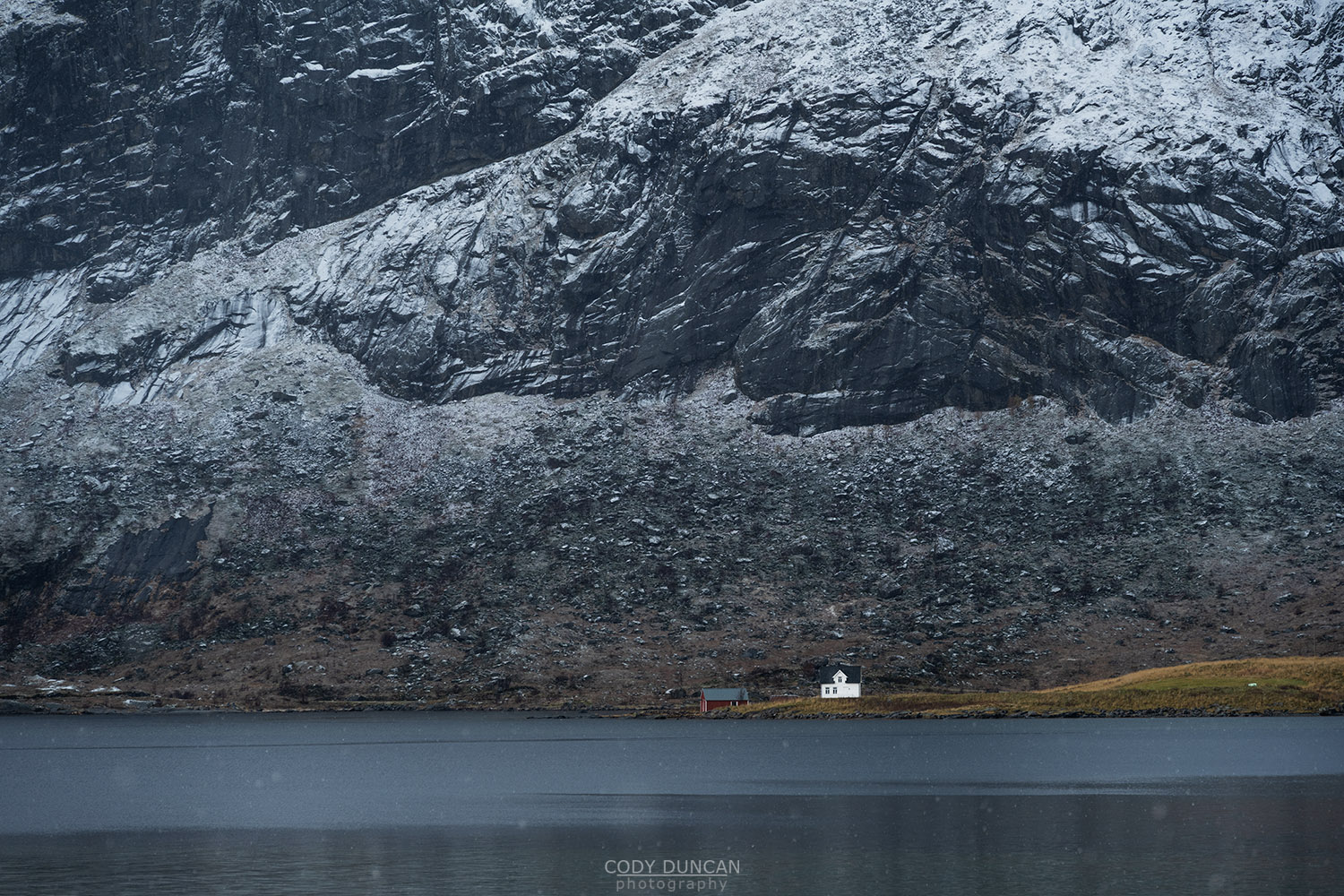
Photo: A house between the mountains and the sea, Flakstadøy, Lofoten Islands, Norway. October 18, 2021. 13:02
With a dusting of autumn snow to add contrast to the otherwise flat light of a snowy October afternoon, this lone house out on the fjord’s edge at Bø, was particularly nice looking on this day. I’ve passed by this house thousands of times, in all sorts of weather, and usually I don’t stop. But this time, the subtly of the moment was worth a quick photo.
It is not a dramatic image. In fact, its actually pretty boring. But Lofoten isn’t pure drama 24 hours a day, 365 days a year. Many, if not most days, there isn’t much spectacular happening. And that is perfectly fine! And so here is a photo of a simple house beside the sea and below the mountains on a flat, overcast, and snowy October day.
What I do think works about the image, and is the reason I stopped this time, is the separation of the cool, slightly snowy background with the brighter autumn colors of the field immediately next to the house which adds a bit of contrast and separation that the flat light was unable to while still retaining a fairly neutral look to the image overall.
Head over to my Instagram account for (almost) daily postings of the local conditions here on Lofoten: @distant.north
Camera Info:
Nikon Z7 II
Nikon 24-200mm f/5.6-6.3
160mm
ISO 100
f 7.1
1/160 second
WB Daylight

